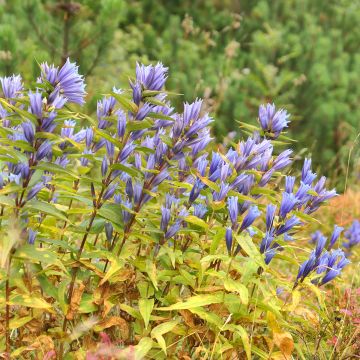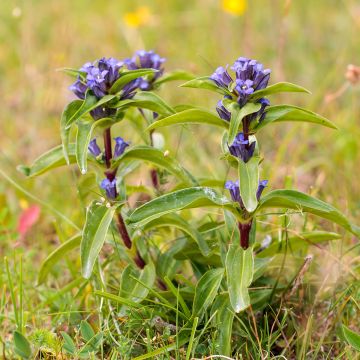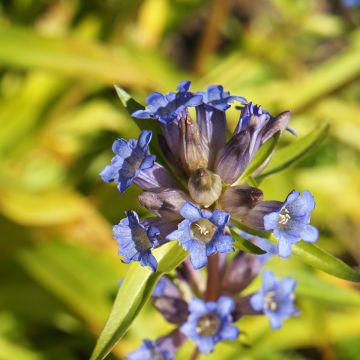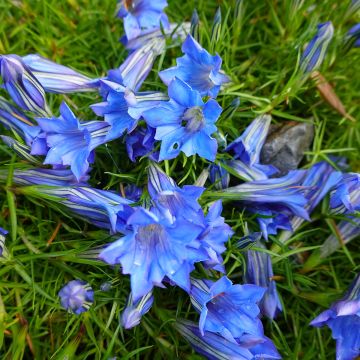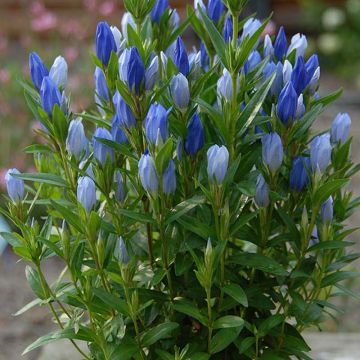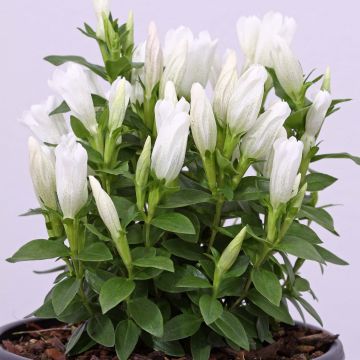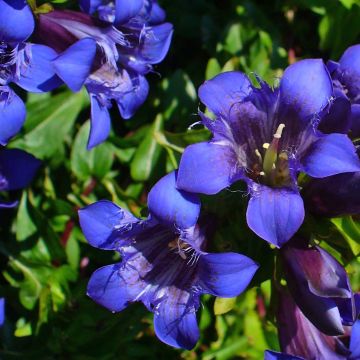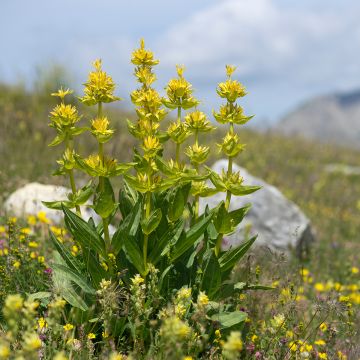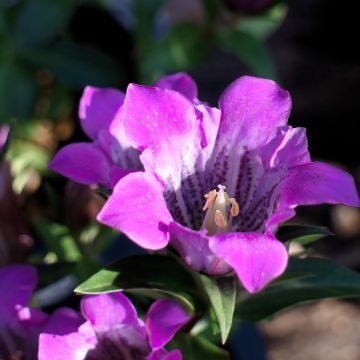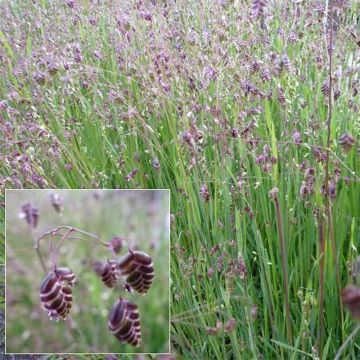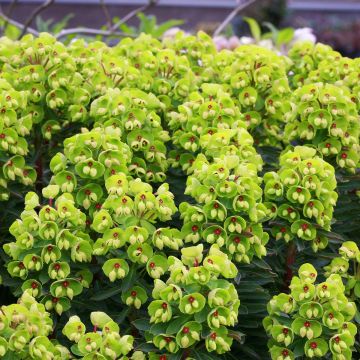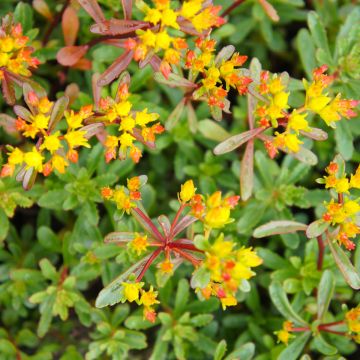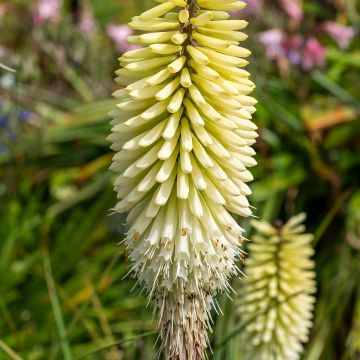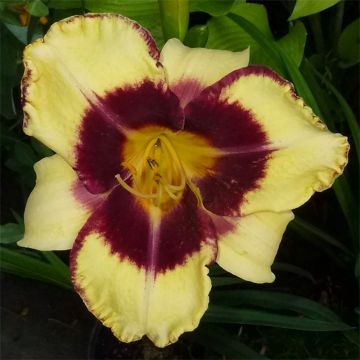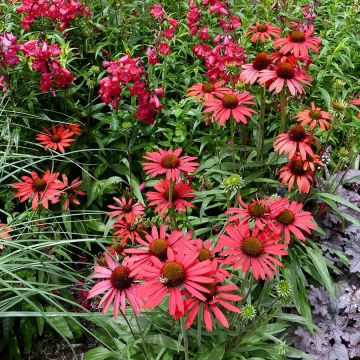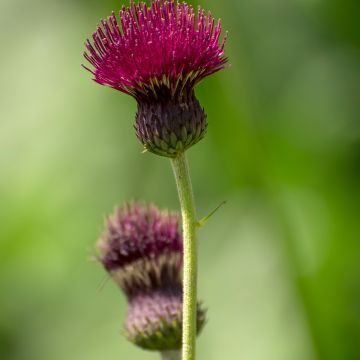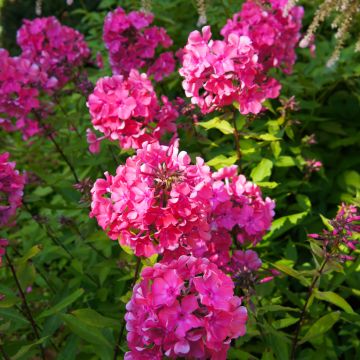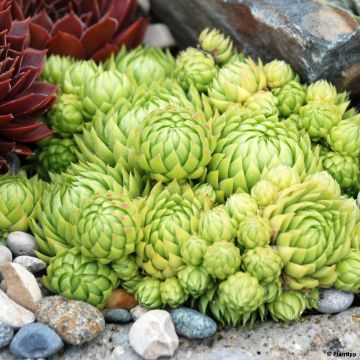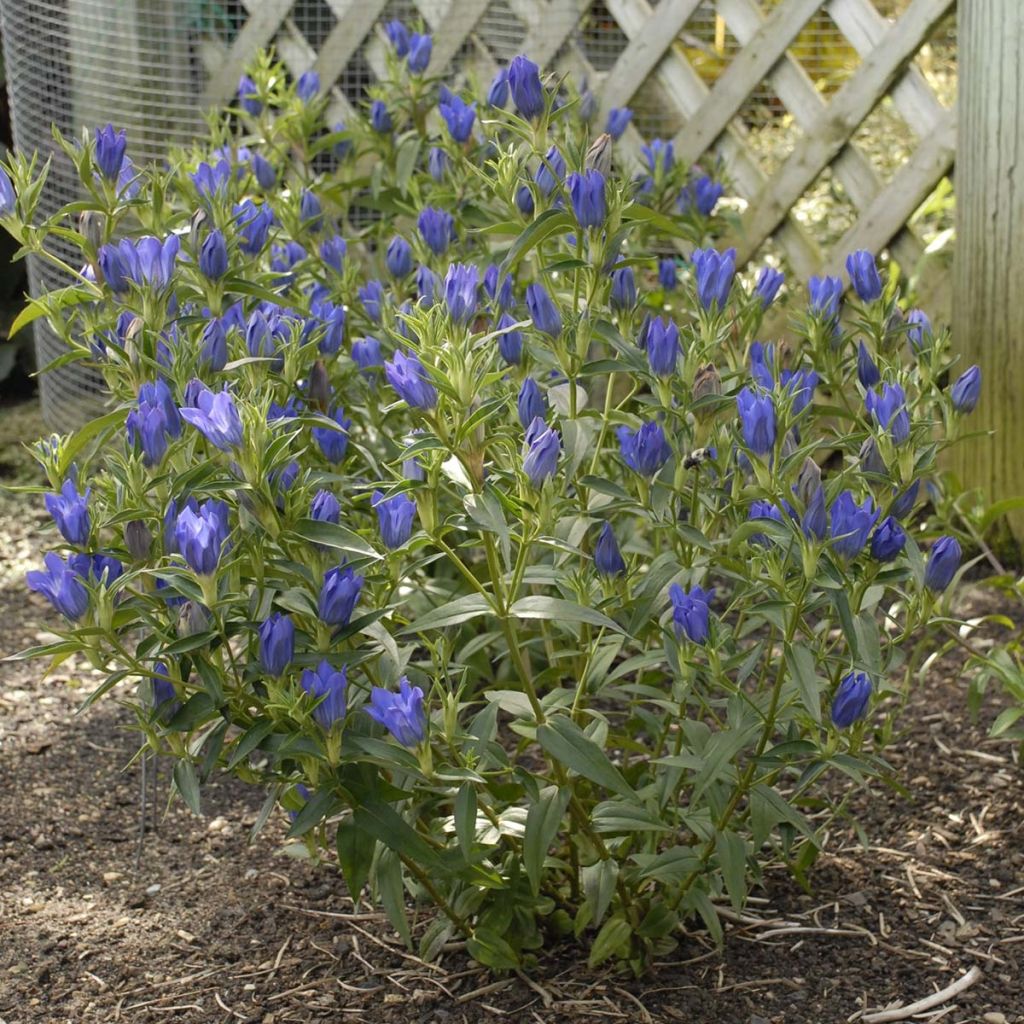

Gentiana True Blue
Gentiana True Blue
Gentiana True Blue ®
Why not try an alternative variety in stock?
View all →This plant carries a 12 months recovery warranty
More information
We guarantee the quality of our plants for a full growing cycle, and will replace at our expense any plant that fails to recover under normal climatic and planting conditions.
From €5.90 for pickup delivery and €6.90 for home delivery
Express home delivery from €8.90.
Does this plant fit my garden?
Set up your Plantfit profile →
Description
'True Blue' Gentian is a new variety of hybrid gentian that is very blue, floriferous, and easy to grow in any moist soil. This perennial has a neat appearance, forming a regular clump adorned with rich, vibrant green foliage, and bears along its stems and at each node, flowers of an authentic gentian blue. From the middle of summer to the beginning of autumn, this gentian reveals its multiple funnel-shaped corollas, creating a dazzling display on the edge of a flowerbed or in a beautiful pot on the terrace. Attractive to bees and butterflies, its flowers are stunning in a vase.
The 'True Blue' Gentian is a very recent American horticultural creation. Like all gentians, it belongs to the Gentianaceae family. It is a deciduous perennial plant, with aerial vegetation that disappears in winter. Forming an upright but slightly spreading clump, this bushy variety is adorned with beautiful lanceolate leaves, shiny, measuring about 4 to 6 cm (2in) long, of a beautiful dark green colour, with a lighter central vein. With fairly rapid growth, it reaches about 60 cm (24in) in height and 50 cm (20in) in width. From July-August to September, numerous large flowers 5 cm (2in) in diameter bloom along the length of the stems, in the shape of trumpets, facing upwards. They bloom at the axils of the leaves and in terminal clusters. They only fully open in very bright sunlight. Each one has a corolla that widens into 5 lobes of a very bright blue, with no trace of violet. The throat of the flower is streaked with white and midnight blue.
The True Blue gentian is a perennial plant that is relatively easy to grow for a gentian, as it will adapt to a good, well-drained garden soil, even slightly alkaline. In the ground, it will ideally be placed in soil enriched with compost, remaining fresh and well-drained, on a wall, in a rockery, on a slope, on the edge of flowerbeds, or in a trough, in a mountain garden. It prefers sunny spaces but not too hot, or partial shade, where it can establish deep roots. This gentian can be combined, in a flowerbed or rockery, with snowdrops, botanical tulips, crocuses, Lewisia, dwarf conifers, corydalis, or even heucheras. It can be grown in pots without difficulty, following the same growing conditions.
The term Gentiana refers to Gentius, king of Illyria (present-day Albania) in the 2nd century BC, who, according to Pliny the Elder, discovered the medicinal and healing properties of the root of the yellow gentian.
Report an error about the product description
Gentiana True Blue in pictures
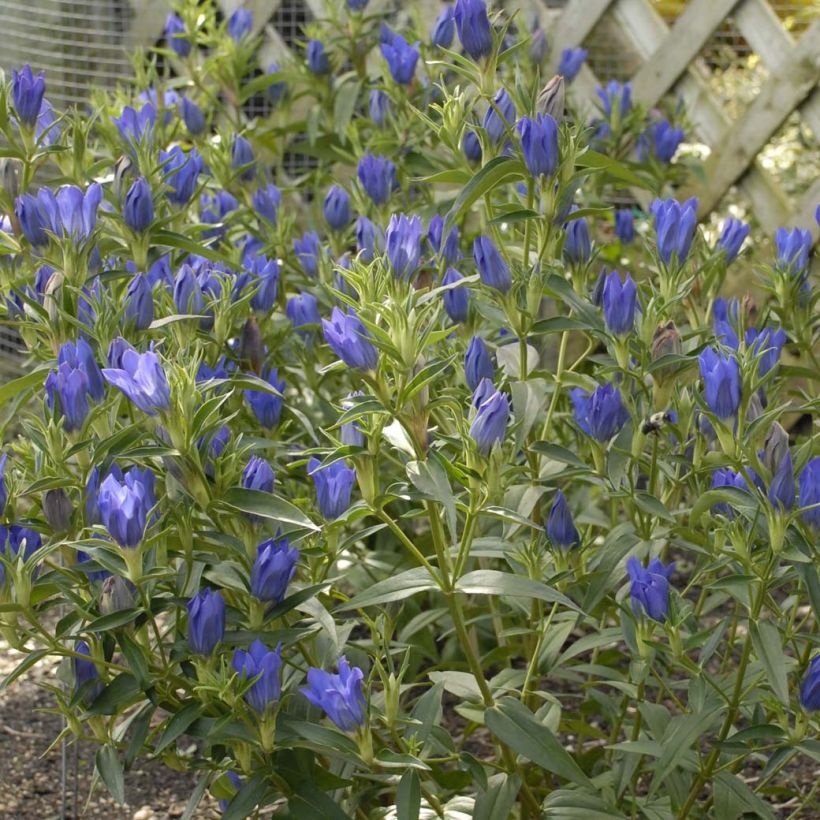

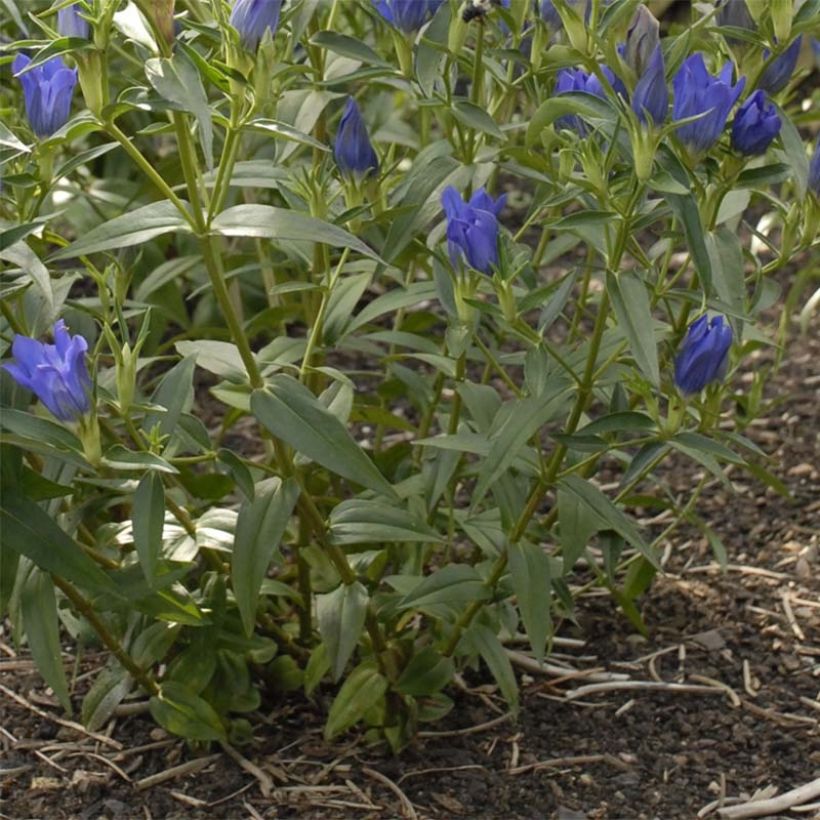

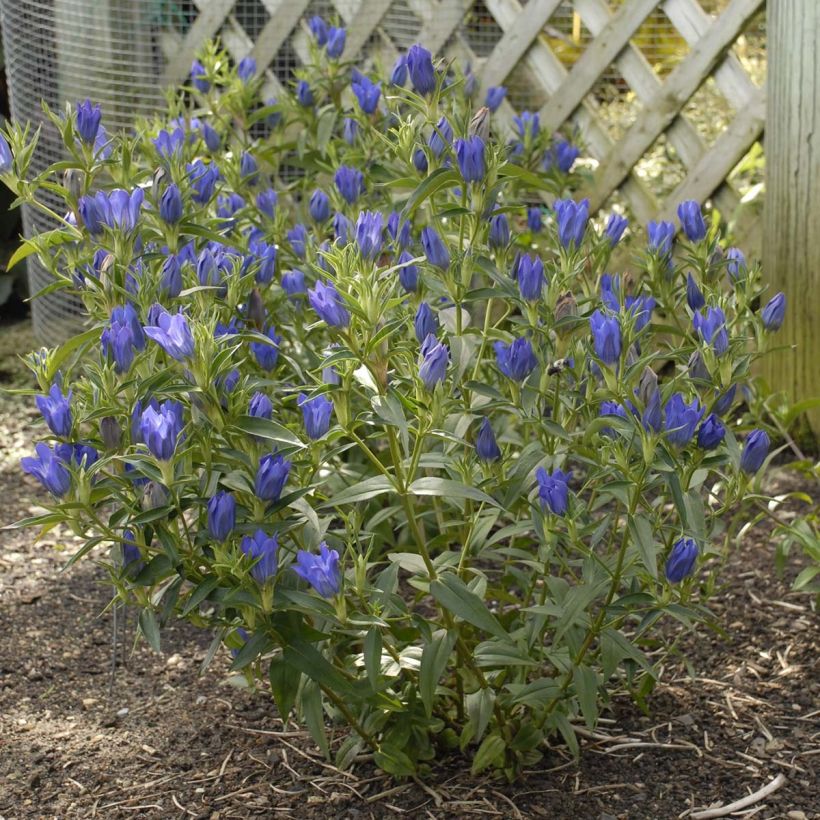

Flowering
Foliage
Plant habit
Botanical data
Gentiana
True Blue ®
Gentianaceae
Cultivar or hybrid
Other Gentian
Planting and care
The True Blue Gentian should be planted in spring or autumn. When planting, between September and March it should be placed in garden soil enriched with compost, gravel, and humus-rich matter such as leaf compost. The presence of limestone in the soil or irrigation water is not a problem. The soil should be well-drained, but moist throughout the year. This plant, perfectly resistant to cold, does not appreciate hot climates and scorching summers. In spring, a contribution of fertiliser in the form of crushed horn or well-rotted manure will be welcome. A sunny or partially shaded site will be suitable. This hybrid Gentian will be planted in a 20 cm (8in) pot, in a mixture of potting soil and gravel. Repot every year, without disturbing the plant's main root.
Planting period
Intended location
Care
-
, onOrder confirmed
Reply from on Promesse de fleurs
Summer flowering perennials
Haven't found what you were looking for?
Hardiness is the lowest winter temperature a plant can endure without suffering serious damage or even dying. However, hardiness is affected by location (a sheltered area, such as a patio), protection (winter cover) and soil type (hardiness is improved by well-drained soil).

Photo Sharing Terms & Conditions
In order to encourage gardeners to interact and share their experiences, Promesse de fleurs offers various media enabling content to be uploaded onto its Site - in particular via the ‘Photo sharing’ module.
The User agrees to refrain from:
- Posting any content that is illegal, prejudicial, insulting, racist, inciteful to hatred, revisionist, contrary to public decency, that infringes on privacy or on the privacy rights of third parties, in particular the publicity rights of persons and goods, intellectual property rights, or the right to privacy.
- Submitting content on behalf of a third party;
- Impersonate the identity of a third party and/or publish any personal information about a third party;
In general, the User undertakes to refrain from any unethical behaviour.
All Content (in particular text, comments, files, images, photos, videos, creative works, etc.), which may be subject to property or intellectual property rights, image or other private rights, shall remain the property of the User, subject to the limited rights granted by the terms of the licence granted by Promesse de fleurs as stated below. Users are at liberty to publish or not to publish such Content on the Site, notably via the ‘Photo Sharing’ facility, and accept that this Content shall be made public and freely accessible, notably on the Internet.
Users further acknowledge, undertake to have ,and guarantee that they hold all necessary rights and permissions to publish such material on the Site, in particular with regard to the legislation in force pertaining to any privacy, property, intellectual property, image, or contractual rights, or rights of any other nature. By publishing such Content on the Site, Users acknowledge accepting full liability as publishers of the Content within the meaning of the law, and grant Promesse de fleurs, free of charge, an inclusive, worldwide licence for the said Content for the entire duration of its publication, including all reproduction, representation, up/downloading, displaying, performing, transmission, and storage rights.
Users also grant permission for their name to be linked to the Content and accept that this link may not always be made available.
By engaging in posting material, Users consent to their Content becoming automatically accessible on the Internet, in particular on other sites and/or blogs and/or web pages of the Promesse de fleurs site, including in particular social pages and the Promesse de fleurs catalogue.
Users may secure the removal of entrusted content free of charge by issuing a simple request via our contact form.
The flowering period indicated on our website applies to countries and regions located in USDA zone 8 (France, the United Kingdom, Ireland, the Netherlands, etc.)
It will vary according to where you live:
- In zones 9 to 10 (Italy, Spain, Greece, etc.), flowering will occur about 2 to 4 weeks earlier.
- In zones 6 to 7 (Germany, Poland, Slovenia, and lower mountainous regions), flowering will be delayed by 2 to 3 weeks.
- In zone 5 (Central Europe, Scandinavia), blooming will be delayed by 3 to 5 weeks.
In temperate climates, pruning of spring-flowering shrubs (forsythia, spireas, etc.) should be done just after flowering.
Pruning of summer-flowering shrubs (Indian Lilac, Perovskia, etc.) can be done in winter or spring.
In cold regions as well as with frost-sensitive plants, avoid pruning too early when severe frosts may still occur.
The planting period indicated on our website applies to countries and regions located in USDA zone 8 (France, United Kingdom, Ireland, Netherlands).
It will vary according to where you live:
- In Mediterranean zones (Marseille, Madrid, Milan, etc.), autumn and winter are the best planting periods.
- In continental zones (Strasbourg, Munich, Vienna, etc.), delay planting by 2 to 3 weeks in spring and bring it forward by 2 to 4 weeks in autumn.
- In mountainous regions (the Alps, Pyrenees, Carpathians, etc.), it is best to plant in late spring (May-June) or late summer (August-September).
The harvesting period indicated on our website applies to countries and regions in USDA zone 8 (France, England, Ireland, the Netherlands).
In colder areas (Scandinavia, Poland, Austria...) fruit and vegetable harvests are likely to be delayed by 3-4 weeks.
In warmer areas (Italy, Spain, Greece, etc.), harvesting will probably take place earlier, depending on weather conditions.
The sowing periods indicated on our website apply to countries and regions within USDA Zone 8 (France, UK, Ireland, Netherlands).
In colder areas (Scandinavia, Poland, Austria...), delay any outdoor sowing by 3-4 weeks, or sow under glass.
In warmer climes (Italy, Spain, Greece, etc.), bring outdoor sowing forward by a few weeks.

































